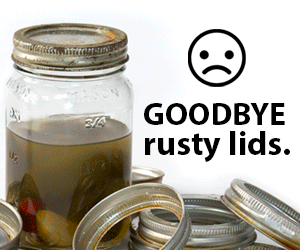Foraging for wild edibles on your homestead can be a fun, rewarding, and delicious way to make use of the land while getting outside. With some key tips on identification, harvest, and preparation, you can safely utilize weeds and wild plants that might otherwise go unused.

Getting Started with Foraging
When getting started with foraging, having the right reference materials and tools on hand is key. Useful items include:
- Regional plant identification books and foraging guides
- Gardening gloves and tools for harvesting
- Baskets, bags, or containers for gathering
- Field guides or phone apps to assist with plant ID
- A journal for recording what you find and where
It’s also important to only harvest plants you can positively identify and know to be edible. If unsure, leave it be. Start slowly with a few easy-to-identify plants before expanding the varieties you collect.
And always be sure to harvest sustainably – don’t pull up roots or strip whole patches to ensure plants can regrow.
Common Wild Edibles to Forage
Many domesticated garden crops actually originated as common weeds or wild plants. Here are some top options to search for while foraging:
Dandelion
Dandelion grows ubiquitously and all parts are edible – leaves, flowers, crowns, and roots. Young leaves can be eaten raw in salads or sandwiches. Flowers can be made into jelly or wine. Roots can be brewed into tea or roasted and ground for a coffee substitute.

Chickweed
Chickweed is a delicate low-growing plant often found in lawns and fields. Both its leaves and stems can be eaten raw in salads, sandwiches, or as a snack due to its refreshing flavor.

Clover
The leaves and flowers of red and white clover can be eaten raw or cooked. They add flavor, color, and nutrients to a variety of dishes from salads to stir fries.

Wild Violet
Wild violets emerge early in spring and make vibrant, colorful additions to spring salads. Their flowers and leaves add a mild, sweet flavor along with beauty. The flowers can also decorate desserts or freeze into ice cubes.

Common Mallow
Common mallow is a leafy green forage found in many backyards and meadows. Its thick leaves have a faint nutty flavor good for salads or sautéing.

Stinging Nettle
Stinging nettle lives up to its name and must be harvested with care to avoid the sting of its leaf hairs! But boiled, dried, or steamed nettle loses its sting, and the blanched leaves make a delicious cooked green. The youthful shoots are also choice spring greens.

Lamb’s Quarters
This edible weed tastes similar to spinach and can be used in any dish calling for spinach. It’s prolific and hard to remove from gardens once established! So harvest the nutritious greens as a tasty way to help curb its spread.

Purslane
In summer a ground cover weed called purslane pops up in many gardens, lawns, and disturbed soils. Its juicy leaves and stems have a tart, lemony flavor that adds zing to salads, sandwiches, and more.

Wild Berries
Keep an eye out for wild blackberries, raspberries, elderberries, currants, wild strawberries, and other native berry bushes. Harvesting these can provide a bounty for jams, desserts, and smoothies.

Harvesting and Preparing Wild Edibles
When collecting wild plants, bring along gardening gloves, pruning shears, and collecting baskets. Use gloves when needed for prickly bushes or stinging plants and pruning shears to carefully snip off leafy greens or tender shoots.
Harvest early in the day after any dew has dried but while still cool to keep greens fresh. Know the environment has not been treated by chemicals or pesticides. Clean all plants thoroughly before eating.
Certain wild edibles keep longer while others are best eaten right away. Berries should be refrigerated and used within a few days. More delicate greens are often best enjoyed immediately but heartier plants like chickweed and mallow can keep for over a week.
Preparation depends on the item but most wild greens thrive being briefly sautéed, added to soups and stews, blended into smoothies, or simply eaten raw. Flowers lend sweetness and color to salads and desserts.
Getting creative with foraged finds is part of the fun! Identify your harvest then look up recipe ideas to put items to use. With abundant weeds like dandelion and purslane taking over your yard, putting them on your plate is the tastiest kind of revenge.
Foraging connects you to nature, seasons, and land while yielding wild flavors you just can’t buy. Keep safety first, tread lightly on the environment, positively identify everything, and soon you’ll discover there is a whole bounty of greens hiding just outside your door.















